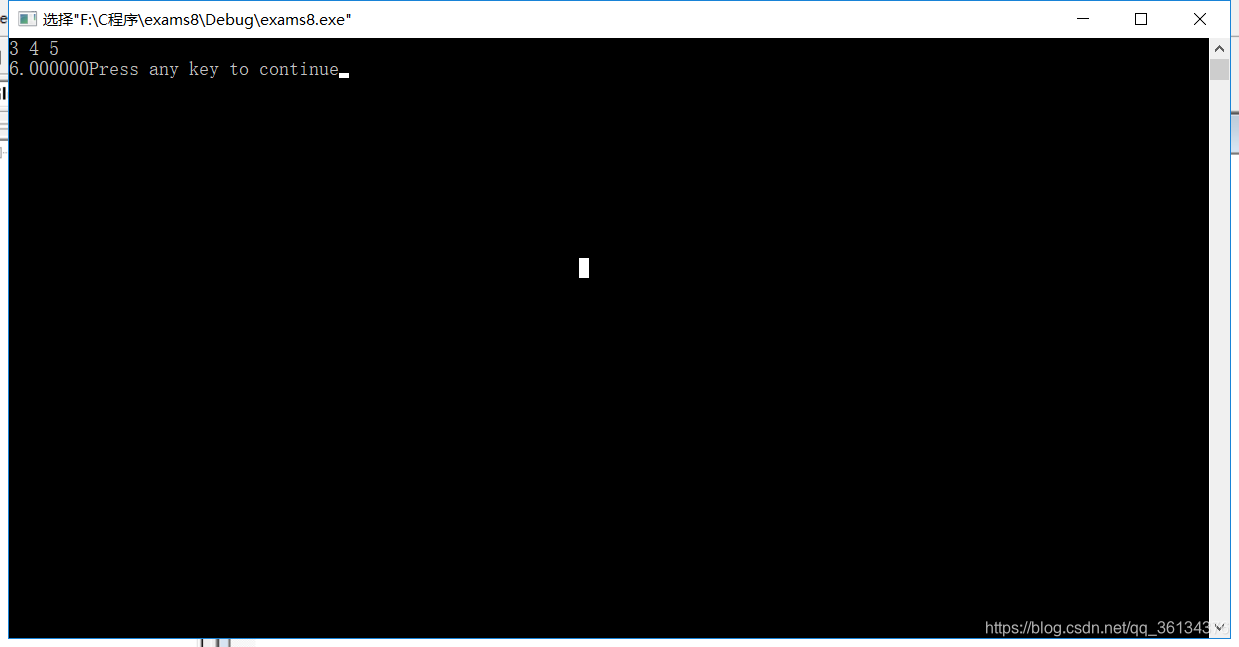C语言-求三角形面积
本文共 301 字,大约阅读时间需要 1 分钟。
一、代码
//三角形面积:(海伦公式)(p=(a+b+c)/2)//S=sqrt[p(p-a)(p-b)(p-c)]#include#include void main(){ double a,b,c; double p; double s; scanf("%lf%lf%lf",&a,&b,&c); if((a+b>c)&&(a+c>b)&&(b+c>a)){ p=(a+b+c)/2; s=sqrt(p*(p-a)*(p-b)*(p-c)); printf("%lf",s); } else printf("无法构成三角形"); }
二、结果

转载地址:http://xbch.baihongyu.com/
你可能感兴趣的文章
Nginx反向代理及负载均衡实现过程部署
查看>>
Nginx反向代理是什么意思?如何配置Nginx反向代理?
查看>>
nginx反向代理解决跨域问题,使本地调试更方便
查看>>
Nginx反向代理配置
查看>>
Nginx启动SSL功能,并进行功能优化,你看这个就足够了
查看>>
nginx启动脚本
查看>>
Nginx在Windows上和Linux上(Docker启动)分别配置基本身份认证示例
查看>>
Nginx在Windows下载安装启动与配置前后端请求代理
查看>>
Nginx多域名,多证书,多服务配置,实用版
查看>>
nginx如何实现图片防盗链
查看>>
Nginx学习总结(13)——Nginx 重要知识点回顾
查看>>
Nginx学习总结(14)——Nginx配置参数详细说明与整理
查看>>
Nginx安装与常见命令
查看>>
Nginx安装及配置详解
查看>>
Nginx实战经验分享:从小白到专家的成长历程!
查看>>
Nginx实现反向代理负载均衡
查看>>
nginx实现负载均衡
查看>>
nginx开机启动脚本
查看>>
nginx异常:the “ssl“ parameter requires ngx_http_ssl_module in /usr/local/nginx/conf
查看>>
nginx总结及使用Docker创建nginx教程
查看>>